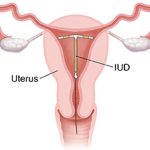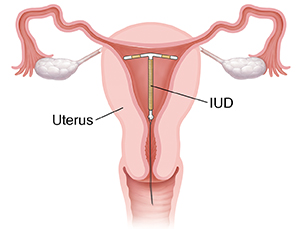Is is possible to have a PID without a STD or STI? The answer is yes. It is not only sexually active females that develop a pelvic inflammatory disease.
So, I met a 30 year old virgin lady who is highly principled and deeply religious. Meeting her is not the issue here. She had just been diagnosed of a pelvic inflammatory disease by the Gynaecologist even though she is not sexually active! She didn’t believe it anyway but it was a reality and she must commence treatment.
Abdominal ultrasound scan, endocervical swab analysis, and clinical assessments confirmed the diagnosis .
The question now is how can a lady develop a PID without an STD or STI? What are the other causes of pelvic inflammatory disease other than from a sexually transmitted infection?
Causes of a PID without a STD. Other modes of acquisition of the pelvic inflammatory disease
1. Puerperal and post-abortal infection: Almost all the remaining 30% of acute pelvic inflammatory disease in the developing world follow childbirth and abortion. It has been estimated that among women with endocervical infection with the gonococcus or chlamydia, about 15% and 10-23%, respectively, will develop pelvic inflammatory disease when they abort. After pregnancy, the placental site provides a good culture medium for any organism which may already be present or which may be introduced. Unhygienic practices in parturition (giving birth) and unsafe induced abortion may introduce pathogenic microorgnanisms into the uterine cavity.
2. Invasive procedure (instrumentation of the cervical canal and uterus): As examples, dilatation and curettage (D&C), tubal insufflation, hydrotubation, hysterosalpingogram (HSG), and insertion of an intra-uterine contraceptive device (IUCD), may carry organisms already resident in the vagina and cervix, or on instruments, into the uterine cavity. If infection is going to complicate an IUCD, it does so within 21 days of insertion.
3. Spread from adjacent organs: Organisms from a perforated appendix, diverticulitis or an intra-abdominal abscess may spread transperitoneally to involve the tubes and ovaries.
4. Haematogenous and lymphatic spread: Considering its weight, the blood flow to the ovary is huge. In transient bacteraemia, seeding of bacteria in the ovaries can occur.
Spread by the lymphatics is also possible.
6. Douching: Douching is the practice of washing or irrigating the vagina canal with whatever substance- water, lime, apple cedar vinegar, salted water, herbal concoctions, lemon and so on with the aim of cleaning the vagina, removing vaginal odour, treating vaginal infections, vag tightening and/or preventing pregnancy. It is practice that is commonly frowned in medical practice. It damages the vaginal microflora and introduces infectious microorganisms into the uterus that can cause pelvic inflammatory disease even without contracting and STD.
And one other thing…..
Sexually transmitted infections (STI) is the chief mode of pelvic infection. The common organisms are: N. gonorhoeae,
C. trachomatis, Ureaplasma urealyticum and B. vaginosis.
In any community, there is a strong correlation between the incidences of STI and of acute PID. Epidemiological factors which significamiy increases the
likelihood of both STI and acute PID include early age at first sexual intercourse, unmarried status, and more than one sexual partner. The last characteristic increases the risk of acute PID three-fold . Sexually transmitted infection is responsible for 70% of cases of acute PID in the developing world. Infections with these organisms start in the endocervix, urethra, and vulvo-vaginal glands.
The organisms are transported to the uterine cavity and tubes when conditions are favourable. Without instrumentation, 8-10% and 8-20% of patients with chlamydial and gonococcal endocervicitis, respectively, will develop acute PID. About 75% of patients with acute PID have an associated endocervical infection or a purulent vaginal discharge. Bacterial vaginosis also does cause PID.

Credit: Lakelandhealth
You can read more on Sexually transmitted infections here.
Please leave a comment.





















